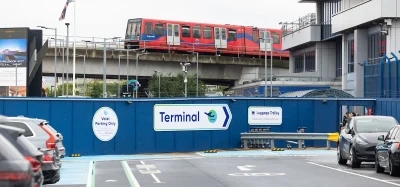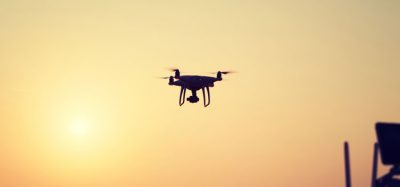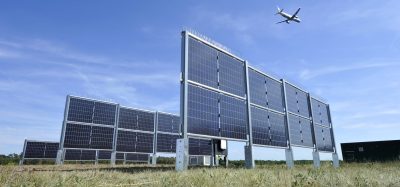Runway surface friction testing
Posted: 2 March 2022 | Vasileios Stefanioros | No comments yet
Vasileios Stefanioros, Senior Expert, Aerodromes at European Union Aviation Safety Agency (EASA), talks to International Airport Review about runway surface assessments, arguing that globally applicable performance criteria must be agreed upon for runway friction measuring device.


Runway surface condition has an important effect on the safety of aircraft operations and a deterioration of runway surface friction may negatively impact aeroplane stopping performance. In an effort to improve aviation safety, aerodromes are regularly assessing, documenting, and reporting the runway surface condition not only when the runway surface is contaminated, but also under simulated conditions. The introduction of the ICAO Global Reporting Format (GRF), which applied from 4 November 2021, provides a standardised method for assessing and reporting runway surface conditions which is directly related to aeroplane performance; however, this method is mainly used on contaminated surfaces.
ICAO Annex 14 requires that information that a runway, or portion thereof, is slippery wet, shall be made available. The ‘slippery wet’ condition is normally established when the friction level of the paved runway, or portion thereof, is less than the minimum friction level specified by the State. This requires aerodrome operators to evaluate, at regular intervals, the friction characteristics of the runway(s) to ensure that among other things, the friction level is not less than the minimum friction level specified by the State. While ICAO requires that runway surface friction characteristics for maintenance purposes must be periodically measured with a continuous friction measuring device using self-wetting features, the assessment should not be based solely on them. It should be complemented with observations by aerodrome maintenance personnel, repeated reports by pilots and aircraft operators based on flight crew experience, or through analysis of aeroplane stopping performance that indicates a substandard surface.
Outdated standards
Friction measuring devices have been serving aerodromes for many years to monitor runway surface friction characteristics. A list of friction measurement devices with corresponding design objective, maintenance planning and minimum friction levels are contained in ICAO Doc 9137 Part 2 ‘Airport Services Manual – Pavement Surface Conditions’. These reference values have not been updated since their inception and can be considered somewhat outdated as they no longer reflect levels which are considered unconditionally valid by ICAO. The minimum friction levels contained in ICAO Doc 9137 Part 2 are based on historic levels that were applicable in the 1970s based on comparisons with the Mu-meter, which was the reference friction device, however these values have not been adjusted to more recent comparisons of these devices.
Join us live: Shaping the Next Generation of Hold Baggage and Air Cargo Screening
Join us live for an insightful webinar on 11th December at 14:00 GMT, in collaboration with Smiths Detection, as we explore the strategic balance of operational efficiency, regulatory compliance, and sustainability in high-volume security environments.
This session offers a focused look into future-proofing your security strategy.
Key learning points
- Cost Reduction: Strategies to minimize bag travel time while simultaneously reducing operational costs.
- Regulatory Roadmap: Insights into the next wave of regulatory changes and their impact on future investment decisions.
- Sustainable Systems: Practical approaches to building sustainability into security systems and lowering the total cost of ownership (TCO).
- Scalable Solutions: Real-world examples of scalable systems supporting current airport growth and preparing for tomorrow.
Register now for expert insights, case studies, and actionable strategies on operational efficiency!
These friction level values have been used by States and aerodrome operators for many years to establish a maintenance programme for their runways. However, the repeatability, reproducibility and reliability of these devices cannot be ensured. Furthermore, the measurements of the different friction measuring devices cannot be correlated to each other because each vehicle is using different wheel and tires and they are measuring something different. Some measure μ-skid, some measure μ at constant slip ratio, some measure μ at variable slip ratio and some measure μ-side force on yawed wheels. This lack of correlation between the devices is a main problem in any attempt to relate their measurements to a common global scale through comparison.
The measurements of the different friction measuring devices cannot be correlated to each other because each vehicle is using different wheel and tires and they are measuring something different”
According to ICAO Annex 14, friction measuring devices that are intended to be used for operational and maintenance purposes must meet the standards set or agreed by the State. For this reason, States are required to set or agree upon a performance standard to be met by the friction measuring devices. Aerodrome operators have an obligation to ensure that the acceptable friction measuring devices fulfil the performance standards set or agreed by the State. Proper calibration and correlation methods are needed. Repeatability and reproducibility of continuous friction measuring devices and their measurements should be based on a common set of performance criteria based on measurement on a test surface.
No international agreement
Currently, despite numerous efforts, there has not been yet an international consensus on how to establish repeatability and reproducibility of friction measurements to be used for maintenance and reporting at aerodromes. Furthermore, there are not, at present, globally accepted procedures for developing methods and logistics for using and managing friction measuring devices. Some States have chosen to develop methods and logistics based on local conditions and historical fleets of friction measuring devices in the State.
In the recent years, ICAO has amended the Standards in ICAO Annex 14 associated with the use of friction measuring devices. For friction measuring devices used for operational purposes, ICAO provisions no longer refer to the bands of friction coefficients which are associated with the comparative terms ‘good’, ‘medium to good’, ‘medium to poor’ and ‘poor’. For friction measuring devices used for runway maintenance purposes, the focus has shifted towards measuring the trend of surface friction characteristics, the performance of the friction measuring devices and the training of personnel who operate the friction measuring devices.
This lack of correlation between the devices is a main problem in any attempt to relate their measurements to a common global scale through comparison”
ICAO is promoting a more holistic approach to assess runway surface conditions and guidance is provided in ICAO Doc 9981 ‘PANS-Aerodromes’. This includes different methods and techniques to monitor runway surface and more specifically rubber build-up, geometry change and polishing. Friction measurements using controlled applied water depth are used to assess the level of rubber build-up and the polishing of runway surface, while measurements on natural wet conditions, which might reveal if portions of a runway are susceptible to ponding and/or to fall below State set criteria.
In conclusion, friction measuring devices play an important role in monitoring the trend of surface friction characteristics, however runway surface assessments should not be based only on the data provided by those devices, but should be supplemented by observations, pilots’ reports or through analysis of aeroplane stopping performance data. Furthermore, ICAO, States, aerodrome operators, aeroplane manufacturers and friction measuring devices manufacturers should work together to develop a common set of globally applicable performance criteria for these devices, so that measurements can be compared, and comparisons can be used globally.
Note: The content of this article is based on ICAO Cir 355 ‘Assessment, Measurement and Reporting of Runway Surface Conditions’ and ICAO Doc 9981 ‘PANS-Aerodromes’.
Biography


The International Airport Summit is open for registration!
Date: 19 – 20 November 2025
Location: JW Marriott Hotel Berlin
At our flagship event of the year, we will dive into the future of airport operations, with expert-led sessions on passenger experience, innovative smart technologies, baggage handling, airside operations, data, security, and sustainability.
This is where global airport leaders come together to share insights, challenges, and real-world solutions.
Limited complimentary passes are available for eligible professionals – first come, first served!
Related topics
Airside operations, Runways and pavements, Safety, Terminal operations
Related organisations
European Aviation Safety Agency (EASA), International Civil Aviation Organization (ICAO)


















